Moving an Entire System: Youngstown City School District’s Work to Improve Learning for Every Child Reflects Strong Commitment to Equity, Collective Practice
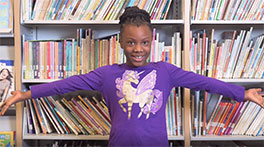
Youngstown City School District (YCSD), one of Ohio's urban eight districts, is improving literacy achievement through a commitment to the use of evidence-based literacy practices across the district.
This commitment fits with the broader district-wide commitment to continuous improvement on behalf of all children (or scholars as they're described by YCSD).
It is reflected in the district mission statement:
In an environment of high expectations, high support and no excuses, the staff of the Youngstown City School District will take the attitude to continually learn, lead and collaborate while using data to support each scholar in our district. See Youngstown City School District: Our Mission... Our Vision for more information.
"Literacy is the basis of school and district turnaround; we are building a foundation that will not only change the lives and trajectory of our scholars but this can also be the impetus of our community turnaround."
Justin M. Jennings, CEO
A little over 5,000 scholars are served by YCSD and every one of them is eligible for free/reduced-price lunch. In fact, according to Curriculum Supervisor Jennifer Walker, YCSD's student population has the "highest percentage of poverty in the state of Ohio." However, as reflected in the district's mission statement, the barriers that Youngstown scholars face are not used as an excuse by district or school personnel. Continually improving adult learning and practice on behalf of student learning is what the district is all about.
"Our scholars are amazing. Our goal is to meet every scholar where they are and to push them to where they need to be," said Walker. Focused and intentional action by the district, based on frequent review of student performance and adult implementation data, involved an overhaul of the district's literacy program to address identified gaps that were preventing the district from meeting the instructional needs of every scholar, including those with diverse learning needs.
Investing in Reading Achievement
YCSD used a balanced literacy approach to teaching reading until the past few years when it adopted the state's evidence-based model grounded in the science of reading (SoR).
Walker described the "monumental shifts" that occurred as part of the change:
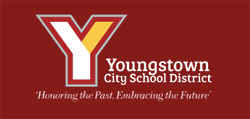
"We know that most of our scholars are not at grade level. That's one of our challenges but we do know that we have to instruct them on grade level while also providing scaffolding. We were leveling a lot of our instruction and our first CEO recognized that leveling was not meeting the needs of our kids. So he made a very bold decision to halt all of the leveled instruction that had been happening in the district. We had invested a lot of time and money in professional development in the use of balanced literacy, but we weren't seeing the kind of gains that we needed to see; we might see small gains or even large gains at times but they wouldn't transfer into the next school year or transfer to other disciplines. The biggest gap was that there wasn't explicit phonemic awareness and phonics instruction built into our balanced literacy program. And we know through the science of reading that comprehension is our end result. Our teachers were spending a lot of precious, valuable instructional time teaching comprehension strategies when, really, it was the child's decoding skills that were really preventing them from having ultimate access to that grade-level work."
When YCSD realized that leveled instruction was lowering expectations for students' literacy achievement, district leaders didn't immediately replace it with a new approach. Despite implementing a gradual release of instructional frameworks to guide teacher instruction, the district endured what Walker described as "a difficult two years" while working to determine what was going to be the best way forward in meeting students' literacy needs.
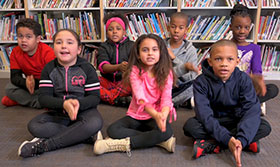
State Support Team (SST) Region 5 personnel – housed at the Mahoning County Educational Service Center – and Michelle Elia, one of Ohio's two state literacy leads, provided the support and direction YCSD needed.
Their approach was to improve literacy instruction district-wide. "They gave us a roadmap for where we needed to go as a district," said Walker.
Using science to guide instruction. The state's vision for improving literacy outcomes for all children, as outlined in Ohio's Plan to Raise Literacy Achievement (Ohio Department of Education, 2020, p. 18), is to "reduce language and literacy barriers for each learner. Further, it aims to significantly increase the number of learners who develop the language and literacy skills they need for grade-level reading comprehension and thus are prepared for their futures."
Ohio's plan starts with the Simple View of Reading (Gough & Tunmer,1986) – illustrated below – to drive all literacy content, conversation, development, and organization of resources. A conceptual model that includes the two basic components necessary for reading comprehension: decoding (word-level reading) and language comprehension (p. 19), the Simple View is not focused on phonics instruction alone.

The state's commitment is to:
- Ensure all learners are represented and supported throughout the language and literacy development continuum, which includes emergent, early, conventional and adolescent literacy;
- Provide specific recommendations for learners having difficulty reading or writing;
- Enhance partnerships and collaboration among general education and special education practitioners and stakeholders; and
- Enhance the state's infrastructure supports to build implementation capacity at the state and regional levels. (p. 18)
Building system-wide capacity through professional learning. YCSD's focus on meeting the needs of the "whole child" involves use of a multi-tiered system of supports – or MTSS1 – to address the academic, behavioral, and social-emotional needs of its scholars. Support for teachers in using standards-based instruction and formative assessments to plan, deliver, and assess the impact of instruction is ongoing.
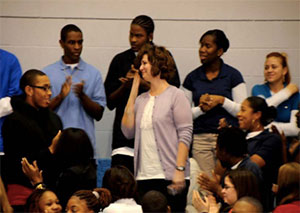
"The biggest challenge teachers face is meeting the needs of scholars where they're at while also holding high expectations, teaching on grade level, and providing the scaffolds and supports students need," reflected Walker (pictured to the right), who holds National Board Certification in Early Adolescence/English Language Arts and was Ohio's 2010 Teacher of the Year.
"The first thing we did was made sure that we all truly understood what the science of reading was, what it entailed for us at the district level, what it entailed for our principals, and then what it meant for our teachers and our students. We had to make sure that we were learners first," explained Walker.
District leaders conducted an audit of the YCSD curriculum with guidance from Elia. Walker recalled what she referred to as the ‘grieving process.' "We identified a lot of gaps and spent almost a year starting to fill those curriculum gaps. Our challenge was not to rush out and buy every program, but instead to take our time and make the best decisions about what we needed."

YCSD had initiated professional development (PD) using Heggerty and Really Great Reading2, which supported teachers in introducing phonemic awareness skills and providing foundational phonics instruction in a systematic way. The district also made curricular changes to build the knowledge and vocabulary of scholars (National Geographic and My Perspectives) aligned with the language comprehension component of the Simple View of Reading. Then, in 2019, the district introduced a new core reading program, which is rigorous and focused on providing grade-level instruction.
"Before, teachers had been responsible for reading instruction on their own and we know that a lot of our teachers had not really received great training in phonemic awareness or phonics. Our ongoing focus is to help our teachers have high expectations and trust that they can meet the needs of our scholars, and add tools to their tool belt – those scaffolds and supports – so that they can support students in accessing text and more rigorous content. It's a mind shift and one that's going to take more time," stated Walker.
A Coherent District-wide Approach
Prior to system-wide professional development grounded in the science of reading, efforts to improve reading outcomes were about "patching gaps," according to Walker.
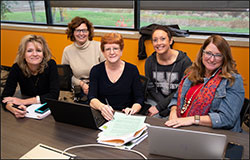
"Sometimes the patches worked. Children are amazingly creative and intelligent and sometimes they do a good job of faking us out through second and third grade. They're good listeners and they pay attention and pick up on things, but it gets harder to do that as they move into fourth, fifth, and sixth grade. It's harder to absorb complex texts through listening to your teacher and peers and our data would drop significantly. It's an equity issue; some of our buildings had higher gains and others had no gains. We really wanted to ensure that all of our kids had access to that explicit and systematic instruction so they could all be successful" explained Walker.
YCSD embraces Ohio's improvement model – the Ohio Improvement Process (OIP) – a five-step improvement process that works hand-in-hand with aligned collaborative learning teams at the district (i.e., district leadership team or DLT), school (i.e., building leadership team or BLT), and classroom (i.e., teacher-based teams or TBTs) level. Youngstown's DLT organizes its work around three major goal areas – improved reading, improved mathematics, and improved culture and climate.
Developing a comprehensive reading achievement plan. The district's work in the reading goal area involved the development of a comprehensive reading achievement plan (RAP), which was led by Chief Academic Officer Christine Sawicki. Under Sawicki's leadership, YCSD assembled a team with representation from SST 5; the community; central office (e.g., Chief of Student Services, Parent Engagement Coordinator, Chief of Federal Compliance, etc.), principal, and teacher leadership; and other stakeholders.
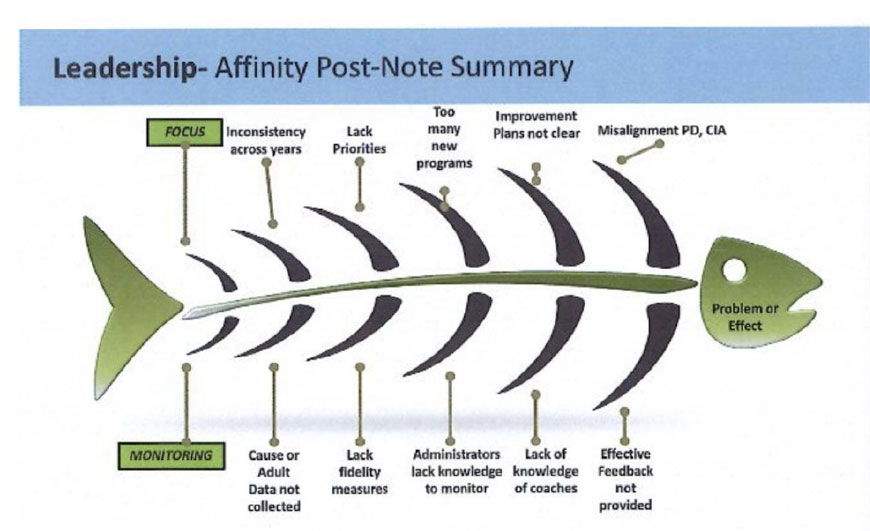
Members worked in small groups (e.g., Teacher Effectiveness, Improvement Process, Diverse Learners, etc.), using root cause analysis to identify gaps (as illustrated in the Leadership fishbone diagram) and strategies for addressing them as a district. Examples of priority issues identified included:
- District leadership does not have a clear picture of where we need to focus when looking at the Decision Framework of each building
- Buildings did not specify areas of focus around teacher and building leadership development
- Scholars with disabilities have limited access to core literacy instruction in the general education classroom
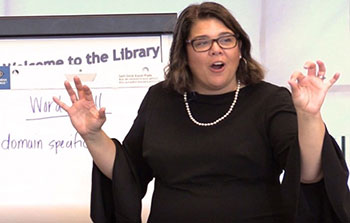
The resulting 143-page RAP, completed in December 2019, addressed each identified issue, set performance goals (e.g., by publication of the 2020-21 state report card data, Youngstown City Schools will demonstrate expected progress at or above in English Language Arts as measured by the "Current Year Value-Added" for each grade level 4-8 and ELA 2, earning a B or above on Improving K-3 Literacy), and developed action plan maps to guide implementation of actions to achieve each literacy goal established by the district.
"Our process was very systematic; one of the first things we did after our RAP was approved by the state was to communicate with all of our administrators and teachers in the district," Walker said. The RAP was the focus of an administrative retreat with all principals in the district. Principals then began meeting with their faculty, supporting all teachers and support staff to understand provisions of the RAP and what it meant for teaching and learning district-wide. "The plan will be a living, breathing document," she added.
"It's an equity issue; some of our buildings had higher gains and others have no gains. We really wanted to ensure that all of our kids had access to that explicit and systematic instruction so they could all be successful."
Jennifer Walker
Curriculum Supervisor
Youngstown City School District
Educators at all levels of the system are implementing the RAP. For example, K-3 TBTs now use a Decision Rules Flowchart, developed by Elia. The Flowchart improves TBT members' capacity to understand student data (e.g., DIBELS) and select appropriate literacy strategies for addressing needs identified in the data. Teachers in grades 6-12 are now receiving high-quality PD to support their use of evidence-based strategies for promoting vocabulary development, comprehension, and writing skills.
"One of our challenges in our grades 6 through 12 TBTs is that teachers are content teachers and sometimes struggle to understand the role of literacy. We say you may not be a ‘reading teacher,' per se, but how do scholars access your content? How do they provide evidence of their learning? The answer – mainly through reading, writing, and speaking. In that sense, all teachers are teachers of Reading," said Walker.
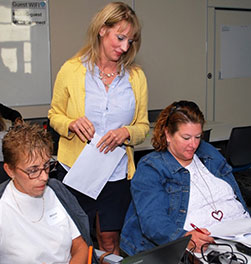
"The RAP is completely embedded in the district's ‘one plan,'" explained Michele Moore, Director of SST 5. "Instead of having a separate plan, or a different literacy strategy apart from the district improvement plan, the RAP became the district plan for the improved reading goal area and there are clear linkages between the DLT and the action steps developed by each building to implement the plan." she added.
The One Plan is part of the Ohio Department of Education's (ODE's) redesign of the CCIP. According to ODE, the redesigned system – ED STEPS – is intended to "enable districts to develop one comprehensive plan for student growth and leverage all its federal and other resources to fund that plan rather than creating programs based on available funding."3
YCSD's work has made a difference already. Preliminary data indicate improvements in the district's four-year graduation rate, decreases in chronic absenteeism, and improvements in K-3 literacy. The district's commitment and hard work are paying off.
In July 2020, YCSD received one of the largest comprehensive literacy grants awarded by the Ohio Department of Education (ODE) to districts implementing practices aligned with Ohio's Plan to Raise Literacy Achievement. The four-year grant provides close to $2,000,000 to support improvements to literacy instruction specifically focused at the following levels: birth to age five, kindergarten through fifth grade, and high school. Funding, which comes from Ohio's Comprehensive Literacy State Development Grant4, will allow YCSD to develop model sites within the district. For more information about Ohio's efforts to improve literacy outcomes statewide.
Minimizing learning loss. Teachers and scholars are learning due to the district's continuous focused effort to improve literacy outcomes. "Teachers are learning more about the science of reading and, as they've deepened their own learning, they've become smarter than the programs, identifying gaps, for example, between phonics instruction and then core instruction," said Walker.
"We were really disappointed when the schools had to go to remote learning in March. We had begun to see great gains in foundational reading skills, not just in one classroom or only in one group, but across various buildings, which was encouraging to teachers. And, then the world went crazy," reflected Walker.
Like other districts across the state, YCSD took steps to minimize learning loss – for students and staff – as soon as the state-mandated school closures took effect in March 2020.
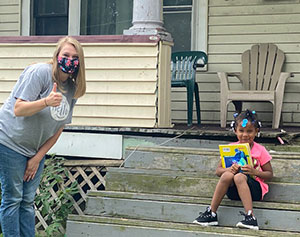
A comprehensive PD program was quickly developed to maintain the momentum around the district's focus on literacy. Nineteen sessions, planned and delivered in partnership with the state literacy leads and through SST 5, were offered during the first week of remote instruction. Soon after, a second round of 32 sessions focused on the district's goals in literacy and math, and Youngstown's technology department offered sessions on a variety of topics (e.g., how to create and run a Zoom meeting). Sawicki reported, "we've kept our focus and everybody's moving in the same direction and everybody sees that."
Maintaining the district's focus and supporting all staff was essential to sustaining students' learning even in unusual times. Beyond the PD provided, YCSD established cohorts of schools to combat isolation and promote collaboration. The K-8 schools are paired, and teachers from both buildings in each cohort work together to share ideas and lessons. Wednesdays are dedicated to instructional planning, holding TBT meetings, working with MTSS teams, and engaging in PD (e.g., a new series on teacher clarity led by SST 5).
Bolstered by the support for literacy improvement provided by the ODE (i.e., state literacy leads, regional early literacy specialists), the SST plays a critical role in helping Youngstown and other districts make systemic improvements in literacy instruction. In addition to PD provided to the district by SST 5 personnel, YCSD participates in the SST-run regional literacy network – a peer-to-peer network that provides a forum for sharing best practices across the region. These networks sustaining job-embedded professional learning over the long term—providing teachers with relevant knowledge, opportunities to observe evidence-based practices, and support as they learn new skills.5
"We're looking forward to leveraging Youngstown's learning in order to take effective literacy practices to scale across the region and support improvement in all four of our counties," said Moore.
1 For more information on MTSS, see https://ohioleadership.org/mtss.
2 For more information, see https://heggerty.org and https://www.reallygreatreading.com.
3 For more information, see https://education.ohio.gov/Topics/District-and-School-Continuous-Improvement/Federal-Programs/EDSTEPS.
4 For more information, see http://education.ohio.gov/Topics/Learning-in-Ohio/Literacy.
5See Michelle Elia’s webinar and related resources here: https://www.smore.com/bk325-k-5-literacy-coach-webinar-series; http://www.livebinders.com/b/2587824.
Resources
Gough, P. & Tunmer, W. (1986). Decoding, reading, and reading disability. Remedial and Special Education, 7, 6-10.
Ohio's Plan to Raise Literacy Achievement (2020). Columbus, OH: Ohio Department of Education. Retrieved from https://education.ohio.gov/getattachment/Topics/Learning-in-Ohio/Literacy/Ohios-Plan-to-Raise-Literacy-Achievement.pdf.aspx?lang=en-US
For More Information
For more information about the YCSD's efforts to improve literacy achievement district-wide, contact Jennifer Walker, Curriculum Supervisor, Youngstown City School District, at jennifer.walker@youngstown.k12.oh.us.
For more information about Ohio's investment in improving literacy for all children, contact Melissa Weber-Mayrer, Director, Office of Approaches to Teaching and Professional Learning; or Michelle Elia, Ohio Literacy Lead, at Melissa.Weber-Mayrer@education.ohio.gov or michelle.elia@sstr5.org.
For more information about resources to support districts during the pandemic and beyond, contact Dr. Jim Gay, OLAC Co-director, at jimgay@basa-ohio.org; or Karel Oxley, OLAC Co-director, at Oxley@basa-ohio.org.
NOTE: Specific literacy products/programs used by YCSD are referenced in this article; however, OLAC does not endorse any particular product/program.